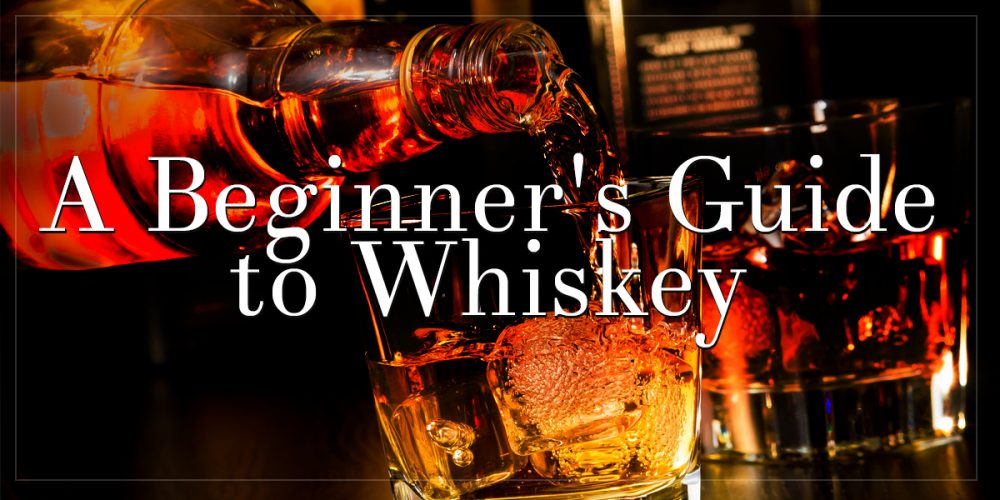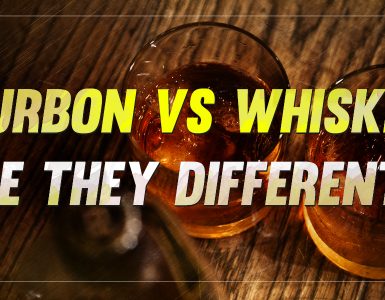Whiskey 101
The world of whiskey drinking has a long history that spans many countries and continents. With the multitude of brands and whiskey types available in the market, it can be difficult to find the right fit for you. But whiskeys are meant to be savored and enjoyed, so the journey to finding the perfect whiskey for your taste buds, while you’re trying out all sorts of flavors, is already half the fun.
Whether you’re purchasing your first whiskey bottle or exploring new ways of drinking, this guide will help you become more familiar with the different characteristics of the beverage.
Originally used for medical purposes, whiskey has been enjoyed around the world as a popular recreational drink. Many prominent figures, such as singer Frank Sinatra, former British prime minister Winston Churchill, author Haruaki Murakami, and actress Ava Gardner, have been known to relish a good whiskey.
There is an amazing array of flavors to enjoy. These include anything, from fruity and spicy to full-bodied and smoky, as each step in making whiskey can contribute to the final product’s flavor and character.
Going to a liquor store can be a bit daunting especially because of the unfamiliar terms used. The first step is to familiarize yourself with some of the whiskey basics.
Getting Started – Whiskey and Whisky
Whiskey is a distilled alcoholic beverage, which is typically aged in wooden casks, that is made from various kinds of fermented grain mash including corn, barley, and rye. The many kinds of whiskies differ on the type of grain, length of ageing, area of distillation, and kind of cask – all of which, along with the water used, affect how the whiskey tastes. They are also spelled as either whiskey or whisky depending on the origin of the drink.
Bourbon Whiskey is a type of American whiskey that is made from a grain mixture that is primarily corn. The creation of bourbon typically involves the use of the sour mash process, where an older fermenting mixture is added to a new batch, and is distilled until it reaches between 65 to 80% alcohol by volume level. Example brands include Woodford Reserve and Jim Beam.
There is no minimum requirement for aging bourbon — except for ‘straight bourbon’ which is aged for at least 2 years. Bourbon containing other spirits, coloring, and flavoring can only be labelled as ‘blended bourbon’ if it is comprised of at least 51% straight bourbon.
Tennessee Whiskey shares many similarities with straight bourbon. The main difference being the sugar maple charcoal filtering process used in Tennessee whiskey production. Like its name suggests, popular brands, such as Jack Daniel’s, are typically produced in the state of Tennessee – with the exception of the George Dickel brand.
Scotch Whisky is 100% made in Scotland and most aspects of its production process are dictated by law. It must be aged in oak barrels for at least 3 years and have an alcohol by volume level of less than 94.8%. Traditionally, majority of Scotch whiskies were made from malted barley; however, there are now many blended grain Scotch whiskies available. Chivas Regal, Johnnie Walker, and Teacher’s Highland Cream are all examples of Scotch whisky brands.
Irish Whiskey must have an alcohol by volume level of less than 94.8%, must be aged in wooden casks for at least 3 years, and must be strictly made in Ireland. While it was traditionally made using a blend of malted and unmalted barley in pot stills, there are also Irish whiskeys that are made from continuous distillation or a combination of both methods. Examples include Bushmills Single Malt and Jameson Irish Whiskey.
Rye. Depending on where it’s made, the components of rye whisky/whiskey may differ. Canadian rye whisky has very relaxed rules when it comes to making the drink. Canadian whisky is only required by law to be mashed, distilled, and aged for at least three years in Canada. It has no restrictions on the rye content. Canadian whisky brands include Crown Royal, which is also popular in the United States, from Diageo and Alberta Premium, which is 100% rye, from Beam Suntory.
American rye whiskey, on the other hand, has stricter rules. It must be distilled from at least 51% rye, must have less than 80% alcohol by volume, and must be aged in new oak barrels. Because of these restrictions, most Canadian whiskies cannot be labelled and sold as rye whiskeys in the United States. WhistlePig Straight Rye and Angel’s Envy Finished Rye are both examples of American rye whiskey brands.
Other Kinds. There are also Japanese whiskies, such as the award-winning Suntory and Nikka brands, available worldwide. The Australian whisky brand, Sullivans Cove French Oak Cask, also garnered awards in a global setting. Both Japanese and Australian whisky brands are known for their quality and distinct taste. There are many other kinds of whiskies, such as Taiwan’s Kavalan, Sweden’s Mackmyra Whisky, and Germany’s Schlitzer Destillerie, available in the market today.
Single Malt, Single Cask, and Blended
These are the subtypes of whiskeys. Using these three subtypes, all sorts of combinations, such as Scotch single malt whiskies and blended rye whiskeys, are possible. For a beginner, it is generally recommended to try single malt whiskeys first.
Single Malt Whiskeys are the most common subtype of whiskey that you’ll encounter. They are made from a single distillery using only malted grain. Since it is one of the purest subtypes of whiskeys, it can help you ascertain what you like and don’t like in a whiskey.
Single Cask Whiskeys, as its name suggests, is bottled only from a single cask. They are usually more expensive due to their novelty and rarity.
Blended Whiskeys are made from mixing together the same main type of whiskey, for example, blending different kinds of bourbon together. You won’t normally find different main types combined. They may also contain neutral grain spirits, coloring, and flavorings. Popular brands include Johnny Walker’s Blue Label and Chivas Regal’s 18-Year-Old Blended Scotch Whiskey.
More often than not, the age of the blended whiskey shown on the product must use the age of the youngest whiskey in the blend as dictated by law. This is true for Scotch whiskies and Irish whiskeys.
Choosing a Bottle
Now that you have an understanding of some of the whiskey terms, it’s time to choose a bottle. It is best to start with the type of whiskey that has a great selection in your area. For example, if you live in the United States, then this would be bourbon. This method can help introduce your palate to quality bottles and tastes at cheaper prices. You might want to try various brands of a certain kind of whiskey first so you can start distinguishing flavors. And, once your taste buds have matured, go on to the next type.
The Whiskey Container
It’s perfectly fine to drink whiskey out of any kind of container. However, if you really want to maximize the flavor and experience, you might want to consider being a bit more particular.
Serving whiskey in a glass container is recommended because the container will not taint the flavor of the whiskey. Using tin cups can change the flavor of the whiskey a bit due to their material, but also have its own unique taste.
Specially shaped glasses can also give you a better whiskey experience, functionally and visually. A glass that gets smaller at the top can help you smell, taste, and savor the flavors better.
Way of the Whiskey Drinker
This is probably the most debated topic among whiskey drinkers. There are 4 ways to drink whiskey and there is no right or wrong way to do it – because at the end of the day whiskey drinking is all about YOUR experience. Try them all and see what you like best.
Neat. Most whiskey distillers will recommend to first try it neat. This means to drink it at room temperature in just a glass. This will let you taste the exact flavor that the people who made it wanted it to taste. This also means that you’re getting the full brunt of the alcohol, so this is not for everyone.
On the Rocks. Adding ice (or water) lowers the alcohol by volume of the whiskey in your glass. It can help you tolerate the alcohol taste, especially for high-proof whiskeys, but can also dilute the flavor.
You can choose to use crushed ice, normal ice cubes, and ice balls. Crushed ice can quickly chill your drink – but just as quickly water it down. If you don’t want your whiskey to have a watery taste, then avoid using this altogether.
Normal ice cubes will take much longer to water down your drink. It is easily available and you can easily control how many cubes you want to add. If you’re making the cubes yourself, it is recommended to use distilled or spring water. Using tap water might alter the taste of the whiskey.
New to the drinking scene are the ice balls. You’ll probably see them used in high-end trendy bars. If you can find a mold for home use, then you can make them yourself. They can chill your drink faster than normal ice cubes, but they tend to melt faster as well.
Lastly, if you want to avoid watering down your drink altogether, but still enjoy a nice chilled glass of whiskey, then check out whiskey stones and whiskey balls.
Whiskey stones, which are typically made from soapstone, plastic, or stainless steel, were created as a substitute for ice cubes. Similar to ice, they are simply kept in the freezer and added as needed to the drink. While they do not dilute the drink, they also take a longer time to chill the whiskey.
Whiskey balls are also a great alternative. They are made from stainless steel and usually employ some form of a chilling technology in its interior. They can cool the drink faster and keep the temperature longer. Though it is recommended to remove the whiskey balls first before drinking.
With Water. Many experts will add a little bit of distilled or spring water, about as much as would fit in a whiskey bottle’s cap, to their drink. It will soften the punch of alcohol and let the flavor of the whiskey come through.
Before doing this though, you should take a sip of your whiskey neat. This will let you get a feel for the flavor, however, you’ll also notice that the alcohol will numb your taste buds by a bit. If you continue drinking as is, your tongue might go too numb and you’ll no longer be able to taste the flavor. That’s why you’ll need to start adding a bit of water.
If you still feel that your tastes are numbing, then you should slowly add a bit more water to the drink. Eventually, you’ll find the right amount of water that you need to add in order to enjoy that drink until the last drop.
Cocktails. Many whiskey drinkers frown upon adding other beverages to the whiskey. However, it can be fun, once in a while, to experiment with the flavors you can get from a whiskey cocktail. A word of advice though, you might want to use only mid-range whiskeys for your cocktails. Using a high-end bottle of whiskey and diluting its flavor can be expensive and wasteful.
There are many kinds of popular whiskey cocktails. The Whiskey Sour, usually made with bourbon, is a combination of whiskey, lemon juice, and sugar. In the James Bond books, the titular spy’s drink of choice was a Scotch and Soda cocktail. The Manhattan is also a popular American cocktail that is a combination of sweet vermouth, bitters, and bourbon, rye, or Tennessee whiskey.
How to Savor and Appreciate
Flavor is a combination of what your nose smells and what your tongue tastes. For something like a whiskey, which has a complex flavor, the ritual of smelling the drink and letting it linger in your mouth is even more important. This is very similar to how wine is enjoyed.
On the first time you smell the drink, you’ll probably only be taking in the smell of the alcohol. After that, your nose gets cleared and you’ll be able to get an inkling on the whiskey’s true flavors.
Now, take a sip, but don’t swallow it right away. Let it roll around your mouth and linger for a bit. Try to pick out the different flavors in the drink. You might be able to find the woody taste that the drink acquired from being aged in wooden barrels. Savor and remember these flavors. Once you try out other kinds of whiskeys, you might be able to pick out the differences between the unique flavors of each.
Whether you’re savoring a glass of whiskey by yourself or drinking it with good company, these steps will help you have a great experience every time.
Pairing Whiskey and Food
Conventionally, whiskey is drunk by itself. Many people consider the idea of drinking whiskey with food as bizarre. However, there is a growing trend of pairing whiskey with various kinds of foods. This is even promoted by the Scotch whisky industry and a common occurrence in countries such as Japan and India.
It is believed that pairing whiskey with food should follow the same rules as applied to wine. Strong and spicy whiskey flavors go well with strong food flavors, while lighter whiskeys, such as single malt, work best with delicate food tastes.
Chocolate. For chocolate, it is usually the darker the chocolate, the better it goes with whiskey. The complex flavors of the whiskey are enhanced by the bitterness of the chocolate.
Cheese. Depending on the kind of cheese, the best whiskey to pair it with might be different. However, the same general rule applies – strong with strong, light with light.
Fruit. Apples or pears, which have a sharp taste, are known to go well with whiskeys.
Japanese Food. Whisky is enjoyed by the Japanese along with many dishes that contain nori, soy sauce, and miso. These include sushi and a variety of other seafood-based dishes. This is especially true for Japanese whisky, known for its finesse and balance, which complements the flavors of their cuisine.
Indian Food. Many kinds of blended whiskeys work well the flavorful and spicy cuisine from India. In fact, it has become more popular and many whiskey and Indian food pairing events are being held. However, due to the diverse nature of Indian cuisine, it is difficult to recommend a certain kind of whiskey.
Pairing whiskey with food greatly changes the drinking experience. If you are starting to just get a knack for understanding the whiskey flavors, then this may not yet be for you.
A Whiskey for You
Now that you’re more informed about everything whiskey, go out there, and try out various kinds and combinations. Finding your favorite whiskey experience might take a lot of time, but it will always be a time well-spent and enjoyed.
If you’re planning to introduce a friend or a loved one to whiskey drinking, help them start out with a single malt. If you’re planning to give whiskey as a gift, you might want to choose a different kind from a brand that they already enjoy or try a limited-edition bottle.
















